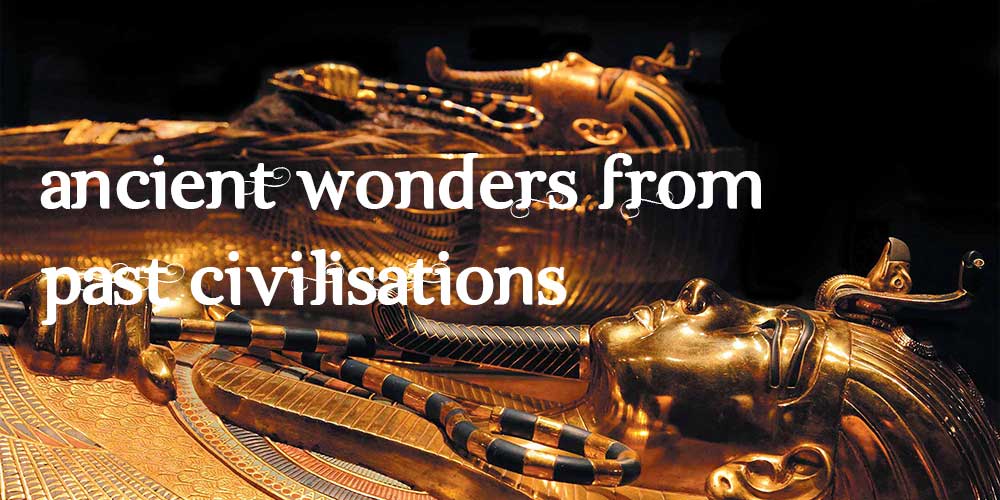
The Beast and His Image
The idea of coerced worship is a contradiction of terms. Where coercion exists, genuine worship does not. When the Bible says, “God is love,” it means, at a bare minimum, that God only desires a relationship with us that preserves our freedom. The third angel’s message warns of a coming global crisis in which worship laws will be imposed upon the world by a false Christian system.
BEGIN BY READING REVELATION 14:9-12.

A “beast” in Bible prophecy symbolizes a kingdom (Daniel 7:17, 23). The “beast” warned about in the third angel’s message is identified in Revelation 13:1-10. Seven identifying characteristics are given:
Verse 1—The beast rises to power “out of the sea.” Compare Revelation 17:15.
Verse 1—He has “seven heads and ten horns, and on his horns ten crowns.” Compare Daniel 7:24; Revelation 17:9-10.
Verse 2—He was “like a leopard, his feet were like the feet of a bear, and his mouth was like the mouth of a lion.” Compare Daniel 7:4-6.
Verse 2—“The dragon gave him his power, his throne, and great authority.” Compare Daniel 7:7-8; Revelation 12:9.
Verse 5—“He was given authority to continue forty-two months.” Compare Revelation 12:6; Ezekiel 4:6.
Verse 6—“He opened his mouth in blasphemy against God.” Compare Daniel 7:8, 11, 25.
Verse 7—He made “war with the saints.” Compare Daniel 7:21, 25.
What kingdom in history rose to power among ten nations populated with different language groups, came to power in the succession of the empires delineated by Daniel, received its political throne from the fourth beast in Daniel’s succession (Rome), reigned for a period of 1260 years, blasphemed God by its teachings, and exercised its power to persecute the followers of Jesus? Only one answer can be given: the papal Roman Empire. And while the answer may bring initial discomfort, it opens a doorway to relief and liberation by giving us permission to believe better things about God than the Church of Rome has conveyed during its dark and bloody history.
The third angel’s message goes on to sound a warning regarding the “image” of the beast. The basic M.O. of the beast is that it uses force in the name of God. It logically follows that “the image of the beast” will take shape when the Roman Church eventually prevails upon some political power to act as the enforcer of its religious authority. But what political power? Revelation 13:11-15 makes a positive identification for us.
Whereas the papacy is described as rising to power from the sea, or from a populated multilingual geographic location, the second beast brought to view in Revelation 13 is described as “coming up out of the earth,” or in a relatively undeveloped land. Whereas the papacy is depicted as a composite of predatory beasts, this beast is “like a lamb,” the docile beast that symbolizes Christ (John 1:29). And whereas the papacy is described as ruling in a geographic location with ten horns (nations) and on his horns ten crowns, indicating nations ruled by kings, the lamb-like beast has two horns without crowns, indicating a nation with no king. So what nation rose to power after the historic 1260-year reign of the papacy, in a relatively undeveloped new land, with a lamb-like governmental structure, and without the rule of kings? It is obvious that Bible prophecy is here describing the rise of Protestant America.
The Mark of the Beast
We can easily deduce what the “mark of the beast” is by noting the words used to describe its basic nature:
“If any man ____________ the beast and his image, and receive his __________ in his forehead, or in his hand . . .” (14:9, KJV). And the lamb-like beast will “speak” through its laws “like a dragon” to “cause” those who do “not ______________ the image of the beast to be killed . . . and that no one may buy or sell except one who has the ___________” (13:11, 15-17).
Clearly, then, the mark of the beast has to do with “worship” and will be imposed by means of civil laws. This makes perfect sense because, as we’ve seen, the beast is a false religious system. It follows that the mark of the beast will be some type of coerced means by which the beast will receive spiritual allegiance.
A second clue is that the mark is received in the “forehead” or in the “hand.” It has to do with worship, which calls for the loyalty of the mind or the compliance of the body. Some people will believe in the system while others will merely yield the homage of their hand for fear of the threatened consequences.
A third clue is “the seal of God,” which is described in Revelation as being “in the forehead” (7:2-3). If we can ascertain what God’s seal is, we will have no problem identifying the mark of the beast, for they are conflicting expressions of faith in two opposing systems of worship. When John speaks of the seal of God in the forehead he is drawing the idea from Deuteronomy 6:1-9 and Song of Solomon 8:6-7. These passages make it clear that the seal of God has to do with God’s law and God’s love being written in our hearts (forehead) and manifested in our actions (hand). Paul adds to the concept by informing us that the Holy Spirit is the active agent who brings about the seal of God within us (Ephesians 1:13-14 and 4:30).
It is not surprising, then, to discover that God’s Law contains all the elements of an ancient seal. The word seal comes from a Greek word that means a signet or sign. In ancient times, a seal was employed by persons of authority to make their unique mark on documents and laws, much as a signature operates today. Three pieces of vital information were included in a seal: (1) the name of the person whose authority was represented, such as Nero; (2) his title, Emperor; and (3) his territory, Rome Empire. Sure enough, these three elements are present in God’s law, within the very commandment that has to do with worship. Read Exodus 20:8-11 and list the three elements that compose a seal:
1. Name: ____________________.
2. Title: ______________________.
3. Territory: ___________________.
The Sabbath is explicitly called “a sign” between God and His people (Ezekiel 20:12, 20). As we discovered in study guide 12, the Sabbath is God’s holy day of rest that reminds us that He is both our Creator and our Redeemer. As such, the Sabbath is the perfect sign or seal of the salvation we have by grace through faith in Christ alone. By contrast, notice what the Roman Church regards as the mark of its authority:
“Of course the Catholic Church claims that the change [from Sabbath to Sunday] was her act. And the act is the mark of her ecclesiastical power and authority in religious matters” (Faith of Our Fathers, p. 14, C.F. Thomas, Chancellor of Cardinal Gibbons).
According to Revelation 13, the day is coming when Protestant America, acting as the political ally of the Roman Church, will “speak like a dragon” and use its powers of state to enforce the mark of papal authority, Sunday observance. At that point, when Sunday is enforced as a day of rest by civil law, it will constitute the mark of the beast.
The Resistance
The third angel’s message closes by pointing to a people who resist the beast system:
“Here is the _______________ of the saints; here are those who keep the __________________ of God and the __________ of Jesus” (Revelation 14:12).
The word here translated “patience” is hypomonē and means endurance, perseverance, constancy. In this context, the point is clear: God will have a people who endure the mark of the beast crisis without yielding. But their resistance will not be impelled by sheer willpower. Rather, they will be moved by “the faith of Jesus” to “keep the commandments of God.” Here we see the vital fusion of the two factors that compose the theology and experience of those who persevere through the crisis. They have faith in “the faith of Jesus”—His faithfulness to man as God and His faithfulness to God as incarnate man—as the sole basis of their salvation. And that reliance upon Him leads them to “keep the commandments of God.” They are experiential believers in the pure gospel Paul describes as “righteousness by faith . . . faith working through love” (Galatians 5:5-6).
The mark of the beast will come upon the world as a liberty-violating religious enforcement based on a false picture of God’s character. By contrast, the theology and experience of those who stand in resistance against the mark of the beast will lead them to do so precisely because they know that coercion kills true worship while love alone motivates it.
[CONNECT]
Non-coercive love is the essence of God’s character, and any system of religion or government that employs civil law in matters of worship reveals that it does not represent God.
The Constitution of the United States enshrines two vital truths of the gospel: first, that all human beings are created equal, thus defying the right of any man, pope or king, to rule their fellow men; and second, that all human beings are created innately free, thus acknowledging liberty of conscience as the natural state of humanity and the only state of being in which true worship may occur. And yet, the third angel’s message warns that the American experiment with liberty will be overturned. This great nation will enact laws to violate liberty of conscience and will thus become the facilitating political engine that will bring upon the world a crisis of individual conscience and character. Pressures will be brought to bear upon the world that will drive every person on earth to act out their picture of God.
[EXPERIENCE]
I am so thankful that God wants my heart and not my outward compliance against my will.
“Where the Spirit of the Lord is, there is liberty” (2 Corinthians 3:17). The fact that God saves me while simultaneously preserving my freedom is such good news. I will serve Him with my whole heart, not because I have to, but because I want to.
Phone 1300 300 389























